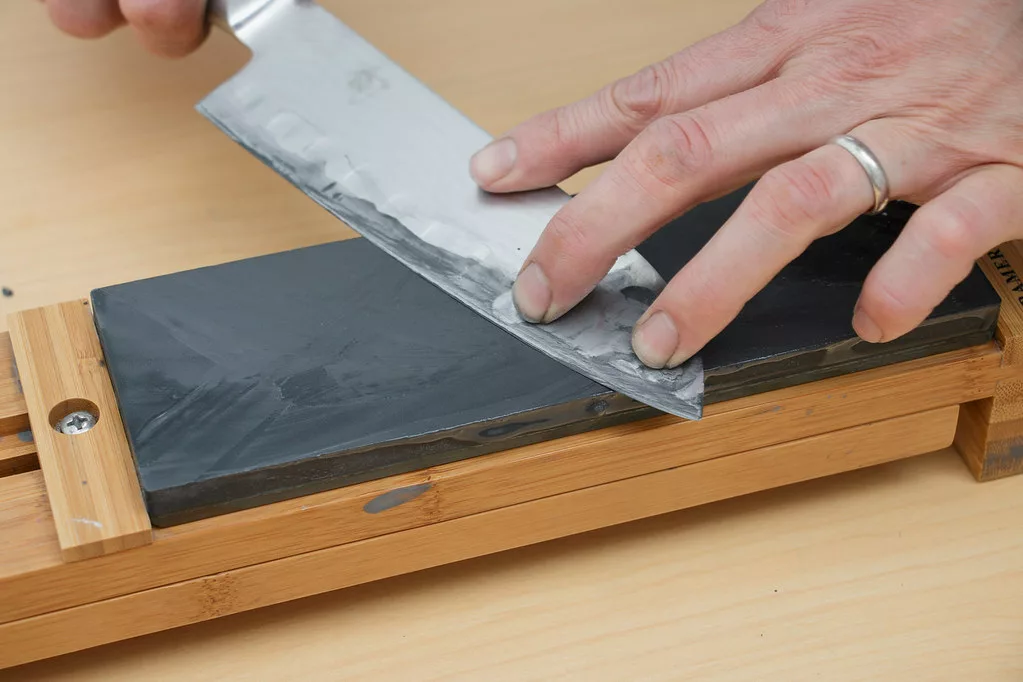A razor-sharp knife is a game-changer in any kitchen or workshop, ensuring precision and efficiency in every task. Whether you’re a professional chef or a DIY enthusiast, understanding the science behind knife sharpening techniques and tools is crucial for maintaining your blades’ optimal performance. In this comprehensive guide, we’ll delve into the fundamentals of knife sharpening, exploring the principles behind various methods and tools, and providing invaluable insights to help you keep your knives in peak condition. This is the ultimate guide to knife sharpening!
Knife sharpening revolves around two primary principles:
The blade angle plays a crucial role in knife sharpening. It refers to the angle at which the blade’s edge is sharpened relative to the centerline of the blade. Different types of knives require varying blade angles based on their intended use.
Selecting the right angle for your knife impacts its performance, sharpness, and durability.
There are several knife sharpening techniques and tools available, each with its benefits and drawbacks. Let’s explore some of the most popular methods:

Whetstones are flat, rectangular blocks made from natural or synthetic materials, available in various grit sizes.
Pros:
Cons:
Want to learn the beginners guide to Whetstone Sharpening watch this video!
Honing rods are cylindrical rods made from steel, ceramic, or diamond-coated material, primarily used for aligning the blade’s edge.
Pros:
Cons:
Want to learn how to use a Honing rod/steel watch this video!
Pull-through sharpeners feature a V-shaped slot with built-in abrasive materials.
Pros:
Cons:
Watch a video on how easy a Work Sharp pull through knife sharpener is here!
Electric knife sharpeners are automated devices that use motor-driven abrasive wheels to sharpen blades.
Pros:
Cons:
Looking for one of the highest rated electric sharpeners by America’s Test Kitchen see why they rated Chef’s Choice Sharpening Station was their overall best pick here!
Stropping is a technique used to polish and refine a blade’s edge after sharpening, involving running the blade’s edge along a piece of leather or other smooth material.
Pros:
Cons:
Looking at how to strop a knife, check out this video!
Mastering the science of knife sharpening and familiarizing yourself with various techniques and tools is essential for maintaining your knives in top condition. From whetstones and honing rods to pull-through and electric sharpeners, each method offers unique benefits and drawbacks, depending on your skill level, time constraints, and knife type.
By learning the basics of blade angles, abrasion, and alignment, you’ll be better equipped to choose the right sharpening method for your knives and ensure optimal performance and longevity. Remember that regular maintenance and sharpening are crucial for preserving the quality of your knives, making your cutting tasks more enjoyable and efficient. So, sharpen up your skills and start enjoying the benefits of razor-sharp blades today!
Check out our previous work here!